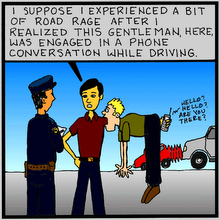In many ways Starbucks is the embodiment of a new sort of culture permeating our society. It at once stands for the many attributes marking the defining characteristics of pop-culture and continually seeks out the boundaries for a new understanding of this. In a way Starbucks promotes, and, ideally represents a democratic accessibility to coffee and thus opens itself to the masses. Given its rather generous payment and benefits package it attracts a variety of workers from across the demographic landscape. But the essence of Starbucks- more than its brand, or coffee, or dense population- is the aesthetic landscape painted on the interior of every store. One begins to feel, upon entering, that an experience is occurring and this is precisely what is so interesting about Starbucks: while waiting for their coffee, patrons can relax to Bob Marley or A Charlie Brown Christmas or read up on Starbucks latest efforts at corporate responsibility. One gets the sense that at Starbucks something is occurring between the patron and the store, and that conversation speaks volumes about what Starbucks aims to get out its consumer and what consumers are willing to accept from Starbucks. It is a relationship that fuels the other, and a mutual acceptance on both sides to nurture this evolution.
This is evident in the proliferation of CD’s strategically placed within Starbucks. In front of the register, in a rack directly behind the register, on the stand where one picks up drinks and over the speakers, there is always music in Starbucks. It is loud enough to be noticed, but not so loud that it is distracting. Sometimes it is hip and on the cutting edge, sometimes it is low-key and marked by a sensibility that appeals to both the 20 year old would be poet and the early 60’s management boss who fondly remembers the day when this was cutting edge and avant-garde. Both though,can appreciate in Starbucks a quality one looks for in a coffee-house: a non-offensive space where ideas are embraced and a collective in formed. But most importantly Starbucks represents a space where one can feign a sway into the alternative without ever having to be alternative. Leafing through the CD’s on display the defining feature, more so than the fact that most CD’s are compilations of some sort, is that Nonesuch is the most common label for non-compilation CD’s. Nonesuch is a subsidiary of Time-Warner and is most notorious for its coup in landing the band alt-country/rock band Wilco and for also housing avant-garde stalwarts Kronos Quartet and Steve Reich. Nonesuch is a label that is purposefully appealed to a certain demographic and Starbucks does as much to reinforce that demographic. And this relationship is indicative of the kind of relationship Starbucks promotes in its stores, where patrons are representing a particular culture and embracing a particular culture and ultimately reinterpreting that culture.
So the next time you visit Starbucks keep an eye, or ear, open for the cultural conversation. What is Starbucks saying about our culture? And what does our willingness to join such conversation say about us as a people?




No comments:
Post a Comment